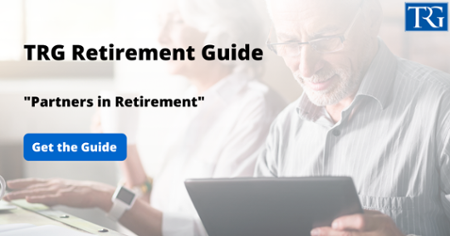Fortune 500 Employees: Lump-Sum Payouts and Annuity Purchase
When contemplating retirement or a job change from Fortune 500, it is crucial to determine whether you are eligible for a lump-sum payment from your retirement plan.
When deciding whether or not to accept a lump-sum payment, it is crucial to plan the distribution of the proceeds. This money may constitute a substantial portion of Fortune 500 employees' financial assets and may be their only private source of retirement income. In light of this, it may be in your best interest to seek assistance in evaluating your retirement options and selecting the one that best meets your requirements.
The insurance association LIMRA conducted a study on employees eligible for a lump-sum pension payment upon retirement, employment change, or leaving the workforce. The purpose of the study was to aid pension companies in devising products and services that assist employees in protecting their pension benefits. The study includes information on 1,763 employees eligible for a lump-sum payment from their employer's retirement plan: 684 employees who retired or left the workforce within the past three years and 1,079 employees who changed professions or left the workforce within the past three years.
Size and Growth of the Market
Included among the employees eligible for a lump-sum payment from their Fortune 500-sponsored retirement plan are those who are: retiring; disabled; changing professions or leaving the workforce; laid off or downsized; and retiring.
Participants in a pension plan that is being terminated pension plan beneficiaries of a deceased participant
Benefit payments from employer-sponsored pension plans totaled $336 billion in 1996, up 6 percent from 1995 and 31 percent from 1991. Approximately 28 percent ($94 billion) of this quantity consisted of lump-sum payments. This amount excludes more than $20 billion that plan participants have elected to leave in their plans.
From January 1993 to September 1994, 940 employees aged 40 and older received a lump-sum payment, according to the U.S. Department of Labor. Subsequent analysis indicates that this study understates the number of individuals receiving a payment and excludes those who were offered a payment but declined it. It does indicate that a large number of employees representing billions of dollars are responsible for determining how to spend this money.
The number of employees who must make this choice, as well as the quantity of money involved, is not only substantial but also rapidly growing. Three factors contribute to this exponential growth:
-
The expansion of defined contribution plans, especially 401(k)s.
-
participant account balance growth in defined contribution programs.
-
the rising number of people reaching retirement age at the beginning of the twenty-first century.
Need for Assistance
Choosing the proper pension option as an employee of Fortune 500 can be one of the most important financial decisions you make. Those who are eligible to receive a single sum payment will have a multitude of options. Their options will consist of at least one or more of the following:
-
accept a single lump-sum cash payment
-
Leave the funds in the plan of the previous employer.
-
immediately transfer the funds to an IRA
-
receive a cash payment and transfer it to an IRA within sixty days, receive the money in installments, or buy an immediate annuity.
Each alternative has benefits and drawbacks. The alternatives have varying effects on household income, tax obligations, and the maintenance of pension benefits. Not all alternatives generate the same amount of estate value or survivor benefits for beneficiaries. Some options generate maximum current income but not estate value. Other alternatives generate no current income but preserve the value of the estate and spousal benefits.
It is strongly discouraged for employees to accept a cash distribution. If they do, they must pay federal and state taxes and, if they are younger than 59 and a half, a 10 percent penalty. The employee has sixty days to contribute the funds to an IRA or qualified pension plan in order to avoid income and penalty taxes. However, the employee will not receive the 20 percent refund until he or she files income taxes for that year. To avoid paying taxes and a penalty on the amount withheld, the individual must deposit the equivalent of the 20 percent withheld within 60 days into an IRA or qualified pension plan. The 10 percent termination penalty is waived if the employee died, became disabled, reached age 59 12 or 55 in the year of termination. If an employee has borrowed from the plan, the loan must be repaid.
Size of Payment
The average lump-sum payment offered to retirees is $119,200. Additionally, nearly 15% of retirees receive lump-sum payments of $250,000 or more. When eligible for a lump-sum payment, two out of five employees choose to transfer the money to an IRA, making it the most popular choice. Approximately one-fifth of employees contribute to their employer's pension scheme. Taking the money in installments or as a series of annuity payments is another popular option. Cash compensation is prevalent with job-changers. 45 percent of those receiving a cash payment saved some or all of it.
Where Do Retirees Invest or Save the Money?
The majority of those who transfer the money to an IRA or receive a cash payment invest it in mutual funds. In addition to money market funds, savings accounts, annuities, equities, and bonds, additional savings and investment products include money market funds, savings accounts, and annuities. There is intense competition for these investment dollars. There is no dominant market share holder. The combined market share of the five corporations with the largest market share is less than 25 percent.
Those contributing to an IRA do not express a clear preference regarding the sort of company chosen to service the account. With 27 percent of retirees opening IRAs at banks and credit unions, these institutions are the most popular among retirees. One-third of employees who experienced a change in employment deposited their IRA with a mutual fund company.
Leaving the funds in the Fortune 500-provided pension plan is the most convenient option for employees. Other factors include the plan's excellent service.
-
They wish to evade paying taxes and fines.
-
The plan's investment performance is solid.
-
They appreciated the investment options.
-
They would possess a greater sum of money.
-
Sources of Support
Sources of Assistance
Fortune 500 plays a crucial function in providing employees with information about their options. Over ninety percent of employees felt their employer provided adequate information. This includes materials written by the employer, employer seminars, and face-to-face meetings with the employer's staff. Another frequently cited source of information is commercially available printed materials from bookstores.
Most do not seek out professional advice. They rely on either their own analysis or the assistance of loved ones. When contacting a specialist, retirees typically select a financial planner or an independent investment advisor.
Conclusion
Pension companies and employers are just beginning to comprehend the requirements of workers eligible for a lump-sum payment from their pension plan and to design products and services to assist these workers. They can play a crucial role in helping employees preserve their retirement benefits. The pension industry must be more proactive in supplying plan sponsors with the necessary resources. One example is a service plan in which the company undertakes responsibility for a significant portion of the employer's administrative duties. This service provides the employer with the pension company's consulting expertise and cost savings. It provides employees with access to a full-time retirement specialist who works daily with employees in comparable circumstances. Additionally, the employer can modify the services to the unique requirements of its employees.
Consider a retirement plan as a picturesque garden. Retirement is like a beautiful flower blooming, and the decision between a lump-sum payout or annuity purchase is like choosing how to water and nourish that flower. The lump-sum payment is like a watering can that gives you a substantial amount of water at once, allowing you to tend to the flower as you see fit. On the other hand, an annuity is like a sprinkler system that provides a steady and predictable stream of water, ensuring the flower's long-term growth and vitality. Both options have their advantages, and choosing wisely will help your retirement garden thrive.
Notes
-
Woods, John R., "Pension Benefits Among the Aged: Conflicting Measures, Unequal Distributions," Social Security Bulletin, volume 59, number 4, autumn 1996.
-
LIMRA estimates that roughly 23 percent of individuals who are eligible for a lump-sum distribution leave this money in the employer's plan.
-
Retirement Benefits of American Workers: New Results from the September 1994 Current Population Survey, Office of Research and Economic Analysis, Pension and Welfare Benefits Administration, U.S. Department of Labor, September 1995.
-
Distributions from 457 plans cannot be transferred to an IRA, and cash distributions are only permitted after retirement.
-
Stable value investments are an investment category that is exclusive to pension plans. Stable value investments, also known as guaranteed interest contracts (GICs), are a popular investment choice for defined contribution plan participants. A stable value investment option yields a predetermined rate of return on the capital invested.
Added Fact:
According to a study conducted by the Employee Benefit Research Institute (EBRI) in 2022, it was found that an increasing number of Fortune 500 employees eligible for a lump-sum payout from their retirement plan are considering the option of purchasing annuities. Annuities provide a steady stream of income throughout retirement and can help alleviate concerns about outliving one's savings. The study revealed that approximately 30% of employees who received a lump-sum payout opted to purchase an annuity, highlighting the growing recognition of the value and stability that annuities can offer in retirement planning for Fortune 500 workers.
Added Analogy:
Imagine your retirement savings as a harvest of fruits you've diligently cultivated over the years. When it comes time to enjoy the fruits of your labor, you're faced with a choice: do you gather all the fruits at once in a lump-sum payout, risking the possibility of running out before your appetite for retirement is satisfied? Or do you carefully select and preserve some fruits to create a steady supply of nourishment through annuity purchase, ensuring a constant stream of income that lasts as long as you need it? Just as a well-preserved orchard provides sustenance for years to come, choosing the right balance between lump-sum payouts and annuity purchase can secure your financial well-being in the golden years.

